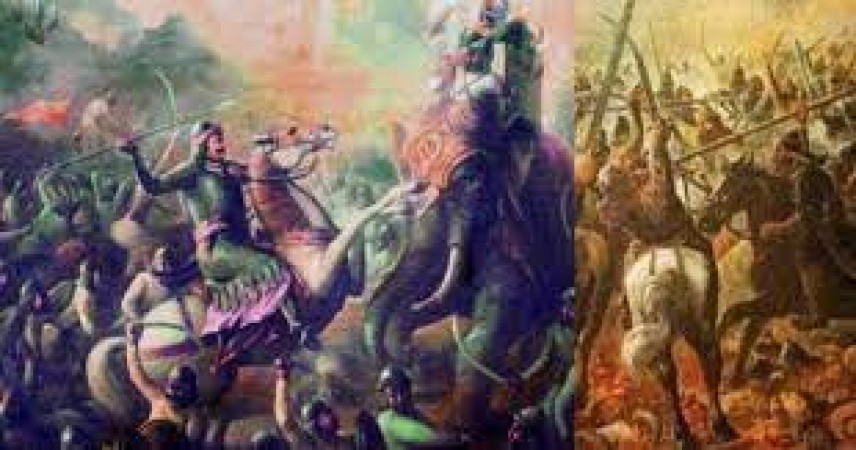
In a fascinating twist of history, a Mughal Muslim ruler managed to secure an astounding victory against the formidable Mughal Empire in the renowned Battle of Panipat. This pivotal clash altered the course of history and left an indelible mark on the Indian subcontinent. As we delve deeper into this historic encounter, we will explore the rise of the Mughal Empire, the emergence of a resilient Mughal Muslim ruler, the intricate prelude to the Battle of Panipat, the battle itself with its strategies and turning points, the aftermath that led to the decline of the Mughal Empire, and the lasting legacy it left behind.
The Mughal Empire, renowned for its grandeur, art, and architecture, was an Indian dynasty that spanned centuries. Established by Babur in the early 16th century, it reached its zenith under emperors like Akbar and Aurangzeb. However, by the 18th century, the empire was marred by internal conflicts and external threats, setting the stage for a remarkable showdown.
Our narrative commences with the lesser-known Mughal Muslim ruler, who rose from humble beginnings to carve a prominent place in history. His determination and strategic acumen were the cornerstones of his eventual confrontation with the mighty Mughal Empire.
Born into a modest family, the future ruler exhibited early signs of leadership and a keen understanding of statecraft. These qualities propelled him on a path of ambition and conquest.
This ambitious ruler encountered an array of challenges, both internal and external, as he embarked on his journey. The aspiration to create a substantial realm of his own fueled his ambitions, making him a potent force in the tumultuous landscape of 18th-century India.
Tensions between the Mughals and the emerging Mughal Muslim ruler were fueled by territorial disputes, political maneuvering, and power struggles. As these tensions escalated, the inevitability of a major conflict loomed large.
The Mughal Muslim ruler exhibited a shrewd diplomatic prowess, deftly forging alliances with other regional powers. These alliances bolstered his position against the Mughal Empire, setting the stage for a cataclysmic clash.
The Battle of Panipat, a colossal confrontation between the Mughal Empire and the forces of the Mughal Muslim ruler, stands as a monumental moment in history. It witnessed the collision of two powerful entities, each vying for supremacy in the Indian subcontinent.
Both sides deployed intricate strategies that encompassed cavalry charges, artillery barrages, and disciplined infantry formations. The battle was a masterclass in military tactics, with each side trying to outmaneuver the other.
Numerous critical junctures during the battle tipped the scales in favor of the Mughal Muslim ruler. These pivotal moments left the Mughal Empire in a precarious position, ultimately leading to its defeat.
The defeat at Panipat marked a significant turning point in the history of the Mughal Empire. It set in motion a decline in the empire's power and influence, which had once been unparalleled in the region.
In the wake of his historic victory, the Mughal Muslim ruler's dominion expanded rapidly. He capitalized on his success and worked diligently to consolidate his rule. This marked the dawn of a new era in the Indian subcontinent.
The Battle of Panipat, with its profound implications, remains a pivotal event in South Asian history. It signifies the rise of regional powers and the waning of the once-mighty Mughal Empire. This battle underscores the idea that even the most dominant empires can face defeat at the hands of determined challengers.
The battle's far-reaching consequences extended beyond the battlefield. It triggered shifts in art, culture, and political dynamics in the Indian subcontinent, as new power centers emerged and old hierarchies were disrupted. The Battle of Panipat, where a Mughal Muslim ruler triumphed over the Mughals, serves as a testament to the unpredictability of history. It reminds us that even the most dominant empires can face defeat at the hands of determined challengers. This remarkable chapter in history continues to captivate scholars and enthusiasts alike, underscoring the complexity and intrigue of India's past. In summary, the Battle of Panipat, a clash of titans, led to the decline of the Mughal Empire, the rise of a Mughal Muslim ruler, and a lasting legacy that reshaped the Indian subcontinent. This pivotal moment in history serves as a poignant reminder of the ever-changing tides of power and the enduring spirit of ambition.
Train Derailment Disrupts Rail Services near Chennai
Biden Launches Tech Hubs in 32 States and Puerto Rico to Boost Innovation and Jobs
Report Highlights Lack of Teacher Preparedness for AI Impact: Urgent Support Needed